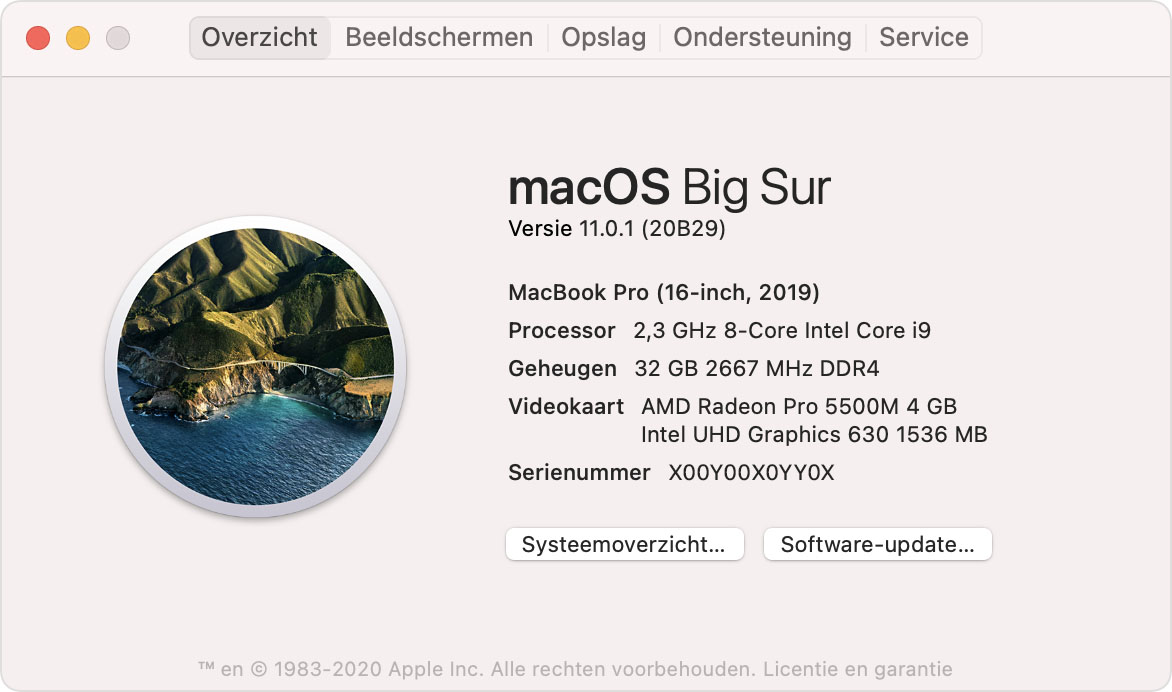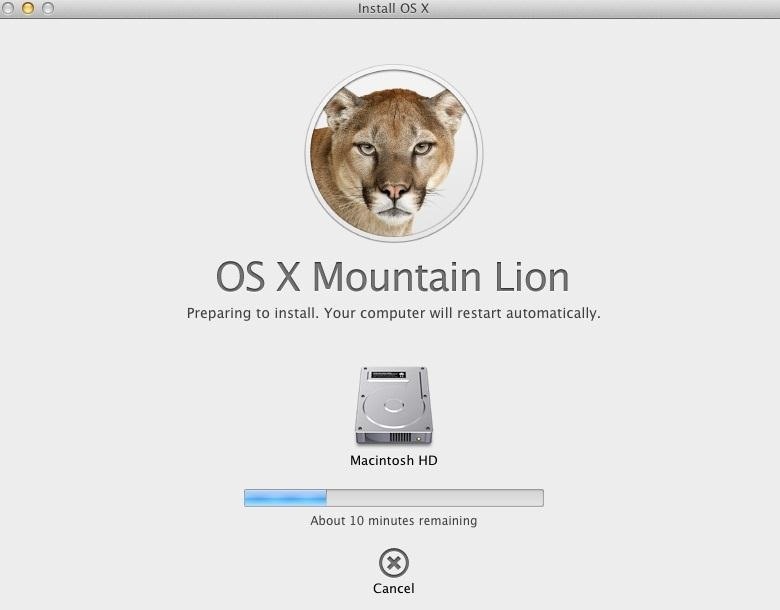MacOS Big Sur elevates the most advanced desktop operating system in the world to a new level of power and beauty. Experience Mac to the fullest with a refined new design. Enjoy the biggest Safari update ever. Discover new features for Maps and Messages. And get even more transparency around your privacy. The last major change to OS X was OS X 10.5 Leopard. It was followed by a faster and more subtly improved Snow Leopard 10.6. OS X 10.7 Lion was then released in summer 2011 with most major changes related to how you control OS X via a Trackpad to create a more iOS experience. Softonic review Download Snow Leopard for Mac. Snow Leopard Mac OS X 10.6 was superseded by Lion OS X 10.7 in 2011 which in turn was replaced by Mountain Lion in 2012. The first thing Mac users should be aware of is that there's nothing eye-popping in Snow Leopard that's going to have you scrambling to upgrade.
- Mac Os 10.6 8 Upgrade To Lion King
- Mac Os 10.6 8 Upgrade To Lion 10.7
- Mac Os 10.6 8 Upgrade To Lion Mane
- Mac Os 10.6 8 Upgrade To Lions
Mac Os 10.6 8 Upgrade To Lion King
This tip is designed to be a one stop shop to find out what iOS you can use if you are able to install a specific Mac OS X.
Now updated for iOS 13. Including a method to downgrade to iOS 10.3.3, and a method of downgrading to iOS 11.4.

On September 19, 2019, iOS 13 was released. Present requirements for iOS 13 include Mac OS 10.11.6 for iTunes 12.8 as a bare minimum.
Two factor authentication logins for AppleID unlocks was introduced on Mac OS 10.12.4. If your iOS is current for it, you can usually use it to unlock either from another current iOS device, or http://iforgot.apple.com if you don't have a Mac.
On May 29, 2019, it was found that iOS 12.1.5 could sync with iTunes on Mac OS X 10.10.5 if you kept iTunes 12.5.5.
This thread discusses more of the inconsistent requirements that were initially stated:

https://www.imobie.com/support/how-to-downgrade-from-ios-12-to-ios-11.htm offers a means of downgrading from iOS 12 to iOS 11, if no other means work to link an elderly Mac that can't be updated to 10.11. Be very careful to backup your data properly to avoid problems. Consider a lightning port data transfer device if you need to backup data. And remember no backup is complete, unless you know you have two working copies.
Downgrading Mac OS X is possible in many cases, but your iOS is not at all. Downgrading a Mac is described here:http://discussions.apple.com/docs/DOC-1948
iOS 12 & Yosemite -is a new tip I constructed to cover what can be done for those with Yosemite when downgrading the iOS is no longer possible.
For iOS earlier than 5, see this tip:Which OS do I have and where should I post?So be sure to look this over before upgrading your iOS and backup/sync your iOS with your Mac:
Mac OS X 10.5.8 (Leopard) supports PowerPC Macs, iTunes 10.6.3, iOS 5.1.1.Mac OS X 10.6.8 (Snow Leopard) supports Intel only Macs, but does support PowerPC applications, iTunes 11.4 and iOS 6, and iOS 7.Mac OS X 10.7.3 (Lion) supports iCloud except for iCloud Drive in its current iteration and the new Notes.Mac OS X 10.7.5 (Lion) (link explains the pitfalls of losing PowerPC applications) supports iTunes 12.2.2.25 (available from Software update as of 10/24/2015), iOS 8 and iOS 9.0.Mac OS X 10.8 (Mountain Lion) is required for iTunes 12.3 and iOS 9.2 and iOS 9.2.1(except iCloud Drive, and the new notes). Does not support iOS 10 or iTunes 12.5.1 according to the Wikipedia below.Mac OS X 10.9.5 (Mavericks)one user has said is required for iOS 10 and iTunes 12.5. It is though unable to sync with iOS 11.Mac OS X 10.10 (Yosemite) is required minimum for the new iCloud Drive and iOS 11 (except for Notes, which requires El Capitan). iTunes 12.7.0.166 is needed for iOS 11.iTunes 12.8 is now available for 10.11.6 and later. I have waited for any confirmation of working 10.10.5 systems and it appears the system requirements are in error on the website for linking to iOS 12.
Mac OS X 10.11 (El Capitan) is required for the new Notes on iOS 9, and 10.11.6 for the iPhone XR, XS, and iOS 12 and is compatible with all Mac OS X 10.8 and later compatible Macs. It is available for download only for Macs with 10.6 installed and updated to 10.6.8.
Mac OS 10.12 (Sierra) currently has no special requirements as of September 23, 2017, however is a free path to upgrade from Macs that shipped with Lion, that upgraded to 10.7.5 or later, and then updated to Sierra to be able to synchronize with iOS 12.
iOS 12 was released September 17, 2018. Please make sure to backup your data on your iphone, ipad, or ipod touch and not apply any update until you are certain that iTunes on your Mac or PC can handle it.
Some may find running Windows on their Mac Running Windows on a Mac, and Connecting it to Macor creating a separate partition for a newer Mac OS How to format a drive, or disc for maximum portability?allows one to sync to a newer iOS without losing compatibility of older Mac OS versions.
Stuck in Mavericks, Mac OS X 10.9.5? There is a published way to downgrade your iOS.

Note: this is not for the faint at heart, but sure is better than having to upgrade your Mac OS X prematurely for an App you can't afford upgrading on your Mac.
The last iOS supported for various iDevices is listed on the table called 'Terminal update for' on:https://en.wikipedia.org/wiki/IOS_version_history
And many of the latest iOS versions and iTunes support are on https://en.wikipedia.org/wiki/History_of_iTunes
Notes: Upgrading to 10.7 and above, don't forget Rosetta! and High Sierra upgrading tipoffer two means of getting your Mac up to speed with iTunes 12.8. Use the first tip if running 10.6.8 or earlier to get to 10.11. And use the other tip if running 10.8 or later.
Is your Mac up to date with the latest version of the Mac operating system? Is it using the version required by some product that you want to use with your Mac? Which versions are earlier (older) or later (newer, more recent)? To find out, learn which version is installed now.
Mac Os 10.6 8 Upgrade To Lion 10.7

Mac Os 10.6 8 Upgrade To Lion Mane
If your macOS isn't up to date, you may be able to update to a later version.
Which macOS version is installed?
From the Apple menu in the corner of your screen, choose About This Mac. You should see the macOS name, such as macOS Big Sur, followed by its version number. If you need to know the build number as well, click the version number to see it.
Mac Os 10.6 8 Upgrade To Lions
Which macOS version is the latest?
These are all Mac operating systems, starting with the most recent. When a major new macOS is released, it gets a new name, such as macOS Big Sur. As updates that change the macOS version number become available, this article is updated to show the latest version of that macOS.
If your Mac is using an earlier version of any Mac operating system, you should install the latest Apple software updates, which can include important security updates and updates for the apps that are installed by macOS, such as Safari, Books, Messages, Mail, Music, Calendar, and Photos.
| macOS | Latest version |
|---|---|
| macOS Big Sur | 11.2.3 |
| macOS Catalina | 10.15.7 |
| macOS Mojave | 10.14.6 |
| macOS High Sierra | 10.13.6 |
| macOS Sierra | 10.12.6 |
| OS X El Capitan | 10.11.6 |
| OS X Yosemite | 10.10.5 |
| OS X Mavericks | 10.9.5 |
| OS X Mountain Lion | 10.8.5 |
| OS X Lion | 10.7.5 |
| Mac OS X Snow Leopard | 10.6.8 |
| Mac OS X Leopard | 10.5.8 |
| Mac OS X Tiger | 10.4.11 |
| Mac OS X Panther | 10.3.9 |
| Mac OS X Jaguar | 10.2.8 |
| Mac OS X Puma | 10.1.5 |
| Mac OS X Cheetah | 10.0.4 |
